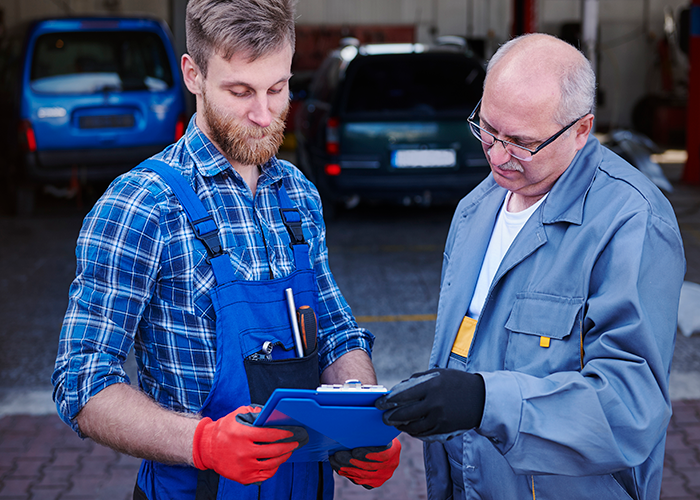Owning a car can be both exhilarating and challenging. While the freedom of the open road is undeniably liberating, it also comes with responsibilities, particularly when it comes to maintenance and repairs. Fortunately, not all car maintenance tasks require a trip to the mechanic. With a little guidance and the right tools, you can tackle some of the most common issues on your own. In this blog, we'll explore the world of do-it-yourself (DIY) car repair tutorials, focusing on easy tasks like changing a car battery, brake pads, and windshield wipers. By the end of this guide, you'll be equipped with the knowledge and confidence to perform these essential car maintenance jobs.
Changing Your Car Battery
Your car's battery is a critical component, providing the electrical power necessary to start the engine and operate various electrical systems. Over time, car batteries wear out and need to be replaced. Here's how you can do it yourself:Materials Needed:
- New car battery
- Wrench or pliers
- Battery terminal cleaner
- Wire brush
- Safety glasses and gloves
Preparation
Begin by turning off your car's engine and ensuring that the ignition is in the "off" position. Put on safety glasses and gloves to protect your eyes and hands during the process.Locate the Battery
Identify the location of your car's battery under the hood. It is usually secured in a plastic or metal battery tray.Disconnect the Cables
Use a wrench or pliers to loosen and remove the negative (black) cable first. Once removed, set it aside. Then, remove the positive (red) cable. Make sure these cables don't touch each other or any metal parts of the car, as they carry an electrical charge.Remove the Old Battery
Carefully lift the old battery out of its tray. Be mindful of its weight, as car batteries can be heavy.Clean the Terminals
Before installing the new battery, clean the terminals on the cables and the battery posts. You can use a battery terminal cleaner or a wire brush to remove any corrosion or dirt.Install the New Battery
Carefully place the new battery in the tray, ensuring that the positive terminal (marked with a plus sign) aligns with the positive cable and the same for the negative terminal. Secure the battery by tightening any mounting brackets or clamps.Reconnect the Cables
Reconnect the positive cable to the positive terminal and the negative cable to the negative terminal. Tighten the connections snugly but avoid overtightening, as this could damage the terminals.Test the New Battery
Turn the ignition to the "on" position to check if the battery is properly connected. If everything looks good, start the car to ensure it starts without issues.Replacing Brake Pads
Your car's brake pads play a crucial role in ensuring your safety on the road. Over time, they wear out and need replacement. Here's how to replace brake pads on your own:Materials Needed:
- New brake pads
- Jack and jack stands
- Lug wrench
- C-clamp
- Brake fluid
- Basic hand tools
Preparation
Park your car on a level surface, and engage the parking brake. Then, loosen the lug nuts on the wheel where you'll be changing the brake pads.Lift the Car
Use a jack to lift the car off the ground, ensuring it's secure with jack stands before working under the vehicle. Remove the wheel.Remove the Old Brake Pads
Locate the brake caliper and remove the bolts securing it to the caliper bracket. Carefully slide the caliper off the bracket, revealing the old brake pads.Compress the Caliper Piston
To make room for the new, thicker brake pads, use a C-clamp to compress the caliper piston gently. This will allow you to fit the new pads over the rotor.Install the New Brake Pads
Place the new brake pads into the caliper bracket, ensuring they fit snugly over the rotor. Reattach the caliper to the bracket and tighten the bolts.Replace the Wheel
With the new brake pads in place, put the wheel back on and tighten the lug nuts.Test Your Brakes
Lower the car from the jack stands and give your brake pedal a few pumps to restore brake pressure. Then, test your brakes in a safe area to ensure they are working correctly.Replacing Windshield Wipers
Your car's windshield wipers are crucial for maintaining visibility in adverse weather conditions. Replacing them is a simple and cost-effective DIY task:Materials Needed:
- New windshield wiper blades
- A flathead screwdriver or a wiper removal tool

